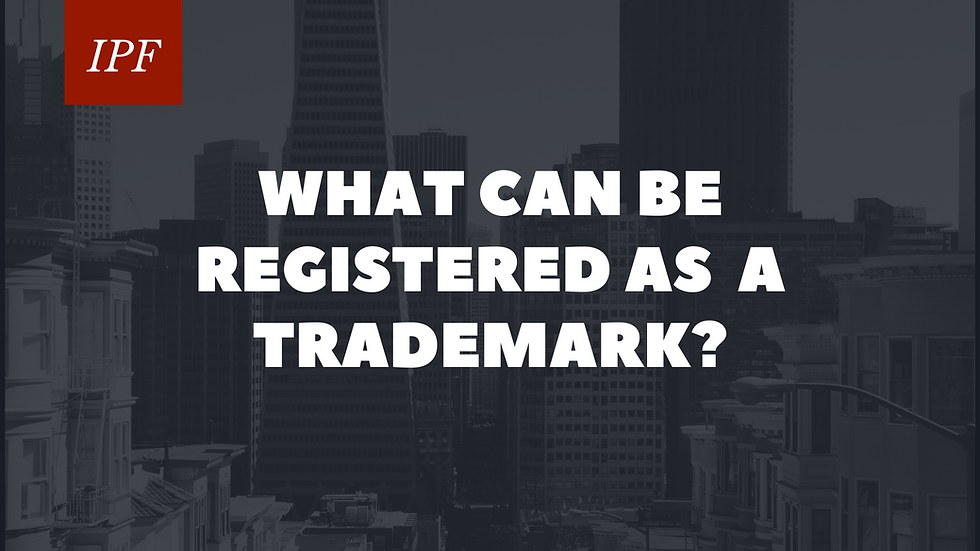Thinking outside the box: Why product packaging is important for your brand and how to protect it
- Vivianna Paschou
- Dec 6, 2021
- 4 min read
We all know that it’s what is on the inside that matters. Consumers choose a product based mainly on its quality, while they repeat purchases that were satisfactory. But how many times have you bought a product, just because of its unique packaging? In reality, most consumers would admit that the packaging of a product plays a key factor in their buying decisions.
This is because apart from the role of protecting a product, packaging can increase the product attractiveness and thus, affect the willingness to buy the product. Indeed, when it comes to products, it is often the case that success relies on your ability to stand out. Packaging combines visual appeal and functional aspects, and it is often part of a product’s identity. So, it would be fair to say that packaging is as important as the product itself. In other words, the more impressive the packaging is, the more attractive the product.
But how can a business protect its packaging with a trademark registration? What are the requirements and how easy is it in practice?
First things first. Packaging can be protected with different IP rights. Depending on its specific characteristics, packaging can be protected with patent, design and trademark law. A patent is an exclusive right granted for an invention, which, in this case, could be a packaging that provides a new way of doing something or offers a new technical solution to a problem (i.e. a new way of opening a bottle, a new closure or a dispensing mechanism). A design right protects the visual appearance of a product that meets the requirements of novelty and individual character.
Taking into account that trademarks require a distinguishing function, packaging will be eligible for registration, if it is capable of distinguishing the goods or services of your business, from those of other businesses. That said, in order to protect a packaging with trademark registration, the packaging must include characteristics that serve a distinguishing function. For instance, a simple shape of a water bottle that does not depart significantly from the shape of other containers used for beverages will be seen by consumers purely as a means of packaging, thus, it cannot fulfil the purpose of a trademark. This is in line with settled case-law, according to which, only a mark that departs significantly from the norm or customs of the sector and thereby fulfils its essential function of indicating origin is not devoid of any distinctive character.
In light of this principle, marks as the ones below, have been refused registration:

3D mark, applied for ‘beers; non-alcoholic drinks, water’ in Class 32 and ‘alcoholic beverages (except beers)’ in Class 33,

3D mark, applied for ‘crisps; potato crisps; vegetable crisps’ in Class 29

3D mark, applies for ‘alcoholic beverages (except beers), mature liqueur’ in Class 33.
Indeed, we can agree that in the above examples, the end consumer of the category of products in question will exclusively perceive the form and design of the packaging, at the most, as decorative and not as a sign indicating the origin of the product.
However, it is often the case that packaging that combines a three-dimensional shape with word elements or logos is more likely to serve as an indication of origin and therefore, be protected as a trademark.
Marks that have been accepted include the following examples:

3D mark, registered for ‘mineral and aerated waters, spring waters, flavoured waters and more particularly flavoured drinks with a mineral water and fruit or fruit extract base, fruit drinks, fruit juices, nectars, lemonades, sodas and, more generally, all non-alcoholic beverages’ in Class 32.

3D mark, registered for ‘perfumery, make-up and cosmetic preparations’ in Class 3.
As seen from the above marks, there are prominent visual elements included in the application, increasing the distinctiveness of the mark and the overall packaging.
But sometimes, if the packaging departs significantly from the customs of the sector in question, it will be eligible for registration, even without the presence of a distinctive word element. That is evident from the following examples of marks that were accepted:

3D mark representing the shape of a lipstick, applied for goods in Class 3, by the luxury cosmetics brand Guerlain.

3D mark, registered by Carolina Herrera Ltd for, inter alia, ‘perfumery, essential oils, make-up preparations’ in Class 3.
And last but not least: the famous J’adore Dior perfume bottle below, which is registered for ‘soaps, perfumery, essential oils, cosmetics, hair lotions’ in Class 3.

So… Rule Number 1: Avoid banalities! Be creative with your packaging ideas, not only because they will attract the attention of consumers, but also because they tell a story about your brand and they can serve as an origin indicator that only you can use and protect through trademark rights.
Rule Number 2: Prefer to include a word element that will ensure the distinctive character required for trademark registration.
Rule Number 3: As always: avoid copying/infringing already existing marks.
Lastly, if you have been using a certain packaging that does not meet the above criteria, you could still apply for registration, if you can prove that it has acquired distinctiveness through its extensive use.
Contact us for more information and consultation.
We are always glad to hear new ideas and help your brand flourish.





Comments